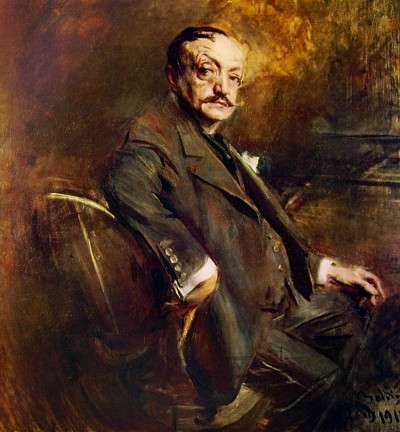
1. Self Portrait, 1911
This arresting self portrait showcases
all of the Boldini hallmarks: an
athletic and animated pose is captured
with slashing, even explosive, brushstrokes.
The figure and the chair emerge
from the shifting tonalities of
the background and partake of it.
The exquisitely drawn hands are
each rendered with a few swift strokes.
The head is a marvel of breathtaking
realism, animated, expressive and
alive.
The closeup reveals the power of
the Boldini technique. The artist
looks out of his unflattering self-portrayal
with a jaundiced, worldly-wise appraisal.
The head is vigorously modelled
with brushstrokes which have been
stabbed in with sharp decisiveness.
The pince nez is suggested with
a couple of strokes. The background
does not carefully define the head,
but rather swirls around it.
Click painting to enlarge.
Oil
on canvas, 41 x 39 inches
(104 x 100 cm).
Museo Boldini, Ferrara
|